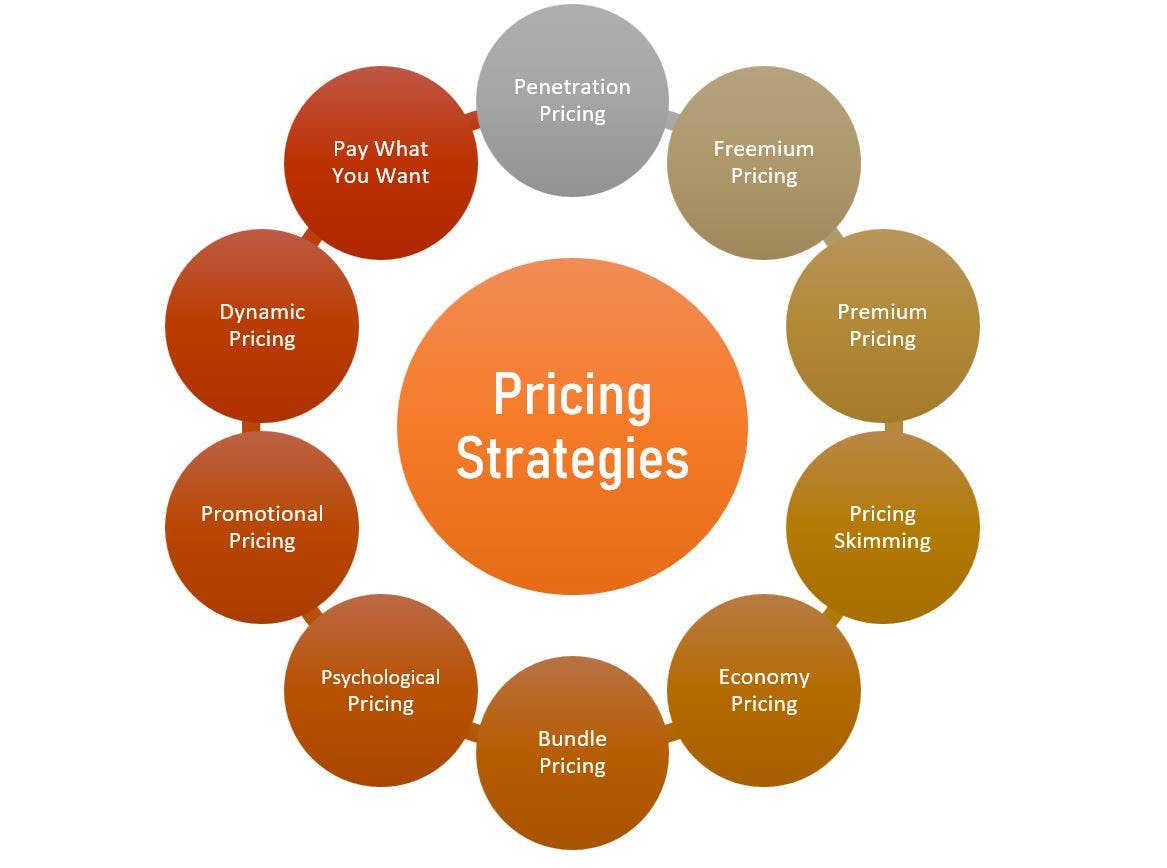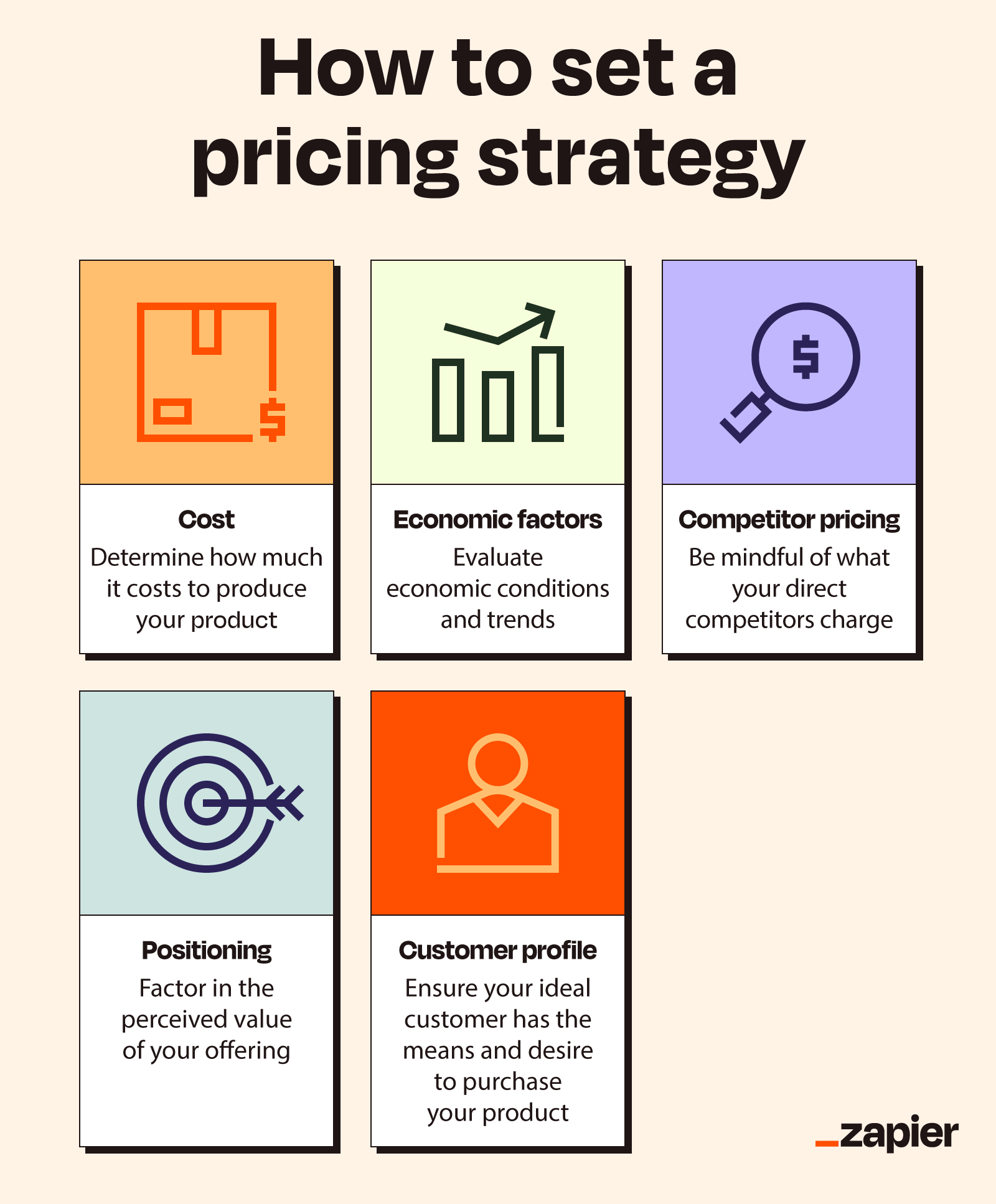Examining the Performance of Your Pricing Strategy in a Transforming Market
Examining the Performance of Your Pricing Strategy in a Transforming Market
Blog Article
Comprehending Rates Techniques: A Guide to Boosting Competitiveness
In a progressively affordable landscape, understanding prices approaches is important for companies aiming to improve their market placement. Numerous pricing versions, such as cost-plus and value-based methods, can dramatically affect just how a firm connects its value recommendation. Comprehending competitor pricing and the psychological elements that affect consumer behavior can produce a nuanced approach to pricing that resonates with target audiences. However, the application of these methods is not uncomplicated-- there are important factors to consider that could establish success or failure. What factors should be prioritized to ensure efficiency in this dynamic environment?
Significance of Rates Methods
In the affordable landscape of organization, the value of pricing approaches can not be overemphasized. Prices serves as a crucial bar for organizations, influencing both market positioning and customer assumption. A well-defined prices technique can enhance success, drive sales, and develop a competitive side.

Recognizing client behavior is necessary in crafting rates methods. Insights into price sensitivity, regarded value, and affordable offerings enable services to adapt their rates models as necessary. In addition, routine analysis of prices effectiveness is necessary to react to market dynamics and customer fads.
Ultimately, a durable pricing method is important not only for profits generation but likewise for lasting company stability. It shapes brand name identity, influences consumer commitment, and plays a critical duty in the overall advertising and marketing strategy. Therefore, organizations should spend time and sources in developing and fine-tuning their rates approaches to thrive in an ever-evolving market.
Kinds of Pricing Designs
Exactly how work identify the most efficient means to price their product and services? The answer depends on understanding various prices models, each matched to various market problems and company purposes.
One common design is cost-plus prices, where a set percentage is contributed to the complete price of manufacturing. This approach guarantees that all expenses are covered while producing a revenue. On the other hand, value-based rates concentrates on the regarded worth of the item to the customer, allowing businesses to charge a costs based upon client demand and fulfillment.
Another approach is dynamic rates, commonly utilized in markets such as travel and hospitality. This design readjusts rates in real-time based upon market demand, rival pricing, and other exterior variables. Penetration rates is additionally considerable, where organizations initially established reduced costs to get in a competitive market and gain market share, later raising rates once a client base is established.
Last but not least, skimming rates entails establishing high preliminary prices for brand-new or innovative products, profiting from very early adopters prior to reducing rates with time. Understanding these versions allows businesses to strategically place themselves in the market, aligning their rates strategies with their overarching objectives.

Analyzing Competitor Prices
Comprehending competitor rates is an essential facet of creating an efficient rates approach. Organizations has to carry out thorough analyses of their competitors' pricing frameworks to determine market positioning, examine possible hazards, and reveal chances for differentiation. This requires accumulating data on competitors' costs, advertising methods, and any type of discounts or incentives they use.
Begin by determining vital rivals within your you can check here market. Use numerous tools such as market research records, rival web sites, and prices comparison systems to gather appropriate information. Assess their pricing versions, consisting of any type of tiered pricing systems, registration costs, or bulk discounts. Recognizing the rationale behind these rates approaches can supply understandings into customer habits and preferences.
It is likewise essential to keep track of adjustments in competitor prices regularly. Market dynamics can shift quickly, and remaining informed allows organizations to change their methods proactively. Consider the ramifications of competitor rates on your value recommendation. If rivals use similar products at reduced costs, you may need to highlight one-of-a-kind selling factors or enhance client solution to warrant your rates.
Eventually, assessing rival rates not only informs pricing choices yet additionally helps businesses remain affordable in a constantly progressing market landscape.
Mental Prices Methods
Mental pricing strategies leverage consumer psychology to affect getting decisions and boost the viewed value of items. One typical approach is appeal prices, where rates are set simply below a round number, such as $9.99 rather of you can look here $10.00.
An additional efficient strategy is status rates, where higher costs are linked with higher top quality. This technique interest consumers' wish for standing and exclusivity, placing items as exceptional offerings. Additionally, bundling items with each other at an affordable rate can create a feeling of worth, motivating customers to acquire greater than they at first meant.
Deficiency prices, which emphasizes restricted accessibility or time-sensitive deals, can likewise trigger urgency, pushing consumers to act swiftly. By comprehending and using these psychological pricing methods, services can properly shape customer perceptions, drive sales, and ultimately enhance competitiveness out there.
Implementing and Readjusting Approaches

When information is collected, businesses ought to evaluate their pricing models against present market problems. This might include adopting dynamic prices methods that permit real-time changes based upon supply and demand fluctuations. Companies must additionally take into consideration segmenting their market to customize prices for different customer groups, enhancing viewed value and driving sales.
Consistently reviewing pricing strategies is important. This can be accomplished with A/B screening or customer feedback, which gives insights into the efficiency of current prices. Additionally, organizations need to continue to be adaptable to adjust to unexpected changes, such as economic downturns or emerging rivals.
Verdict
To conclude, efficient prices techniques work as a crucial component for businesses intending to improve competitiveness in a varying market. By leveraging various rates designs, evaluating competitor rates, and utilizing psychological techniques, firms can better position themselves and connect value to customers. Moreover, consistently changing these techniques in response to market characteristics and consumer actions is necessary for making sure long-term sustainability and profitability, inevitably driving sales and promoting consumer commitment.
In an increasingly affordable landscape, grasping pricing methods is vital for businesses intending to improve their market placement. Recognizing competitor rates and the mental elements that affect customer actions can produce a nuanced approach to prices that resonates with target audiences.Recognizing competitor pricing is an essential aspect of creating a reliable prices technique. Examine their rates models, including any type of tiered rates systems, membership charges, or mass discounts. By leveraging various prices designs, analyzing competitor prices, and utilizing emotional strategies, companies can better place themselves and connect worth to customers.
Report this page